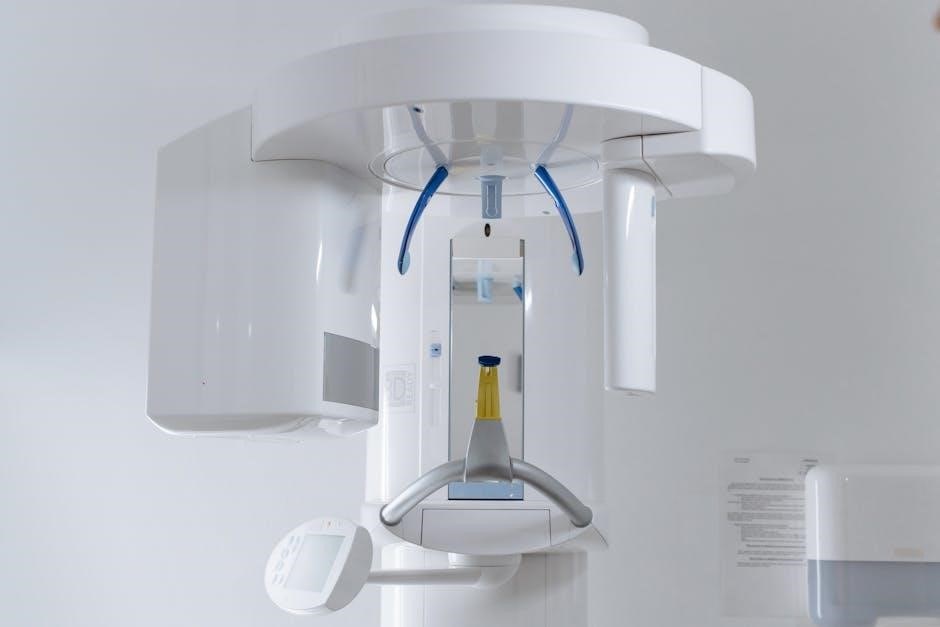
private pilot oral exam guide pdf
The private pilot oral exam is a critical step in obtaining your pilot certification, assessing your knowledge and understanding of aviation principles and regulations.

1.1. Overview of the Private Pilot Oral Exam
The private pilot oral exam is a comprehensive assessment conducted by a designated FAA examiner to evaluate a student pilot’s knowledge and understanding of aviation principles. This exam is a mandatory step in the certification process, ensuring that candidates possess the necessary skills and knowledge to safely operate an aircraft. The oral exam typically covers a wide range of topics, including federal aviation regulations, weather briefings, navigation techniques, aircraft systems, and emergency procedures. It is designed to test not only factual knowledge but also the ability to apply this knowledge in real-world scenarios. Preparation for the exam often involves extensive study, practice interviews, and the use of resources like the Private Pilot Oral Exam Guide PDF, which provides structured questions and answers to help candidates succeed.
1.2. Importance of the Oral Exam in Pilot Certification
The oral exam plays a pivotal role in the pilot certification process, as it assesses a candidate’s ability to apply knowledge in real-world aviation scenarios. By evaluating critical thinking, decision-making, and problem-solving skills, the exam ensures that pilots are prepared to handle the complexities of flight operations safely and effectively. It also verifies a deep understanding of aviation regulations, weather interpretation, and aircraft systems. Passing the oral exam demonstrates a candidate’s readiness to operate an aircraft responsibly and is a mandatory step toward obtaining a private pilot certificate. The Private Pilot Oral Exam Guide PDF is a valuable resource for mastering these concepts and excelling in the exam.
1.3. Structure and Format of the Oral Exam
The private pilot oral exam is structured to evaluate a candidate’s knowledge and understanding of aviation principles. The exam typically begins with an introduction, followed by in-depth questions on key topics such as regulations, weather, navigation, and aircraft systems. The format is interactive, with the examiner asking questions and expecting clear, concise responses. The Private Pilot Oral Exam Guide PDF mirrors this structure, offering a question-and-answer format that aligns with the FAA’s certification standards. It also includes mock interviews and flashcards to simulate real exam conditions, helping candidates prepare effectively for the format and content of the oral test.

Key Topics Covered in the Oral Exam
The oral exam covers essential aviation topics, including FARs, weather briefings, navigation techniques, aircraft systems, flight planning, emergency procedures, aerodynamics, and decision-making, as detailed in the guide.
2.1. Federal Aviation Regulations (FARs)
Federal Aviation Regulations (FARs) are a cornerstone of the oral exam, focusing on rules governing pilot certification, aircraft operations, and safety standards. Candidates must demonstrate a solid understanding of 14 CFR Part 91, which covers general operating rules, and Part 61, detailing pilot certification requirements. Examiners often ask about specific regulations, such as those related to flight restrictions, weather minimums, and aircraft maintenance. Familiarity with these regulations is crucial for safe and legal flight operations, ensuring compliance and adherence to aviation law. The Private Pilot Oral Exam Guide PDF provides detailed insights and sample questions to aid in mastering this topic effectively.
2.2. Weather Briefings and Aviation Weather Services
Weather briefings and aviation weather services are vital for safe flight operations. Candidates must understand how to interpret METARs, TAFs, AIRMETs, SIGMETs, and PIREPs to make informed decisions. The oral exam often includes questions on decoding weather reports, understanding forecast accuracy, and applying weather information to flight planning. Knowledge of weather services like ATC, FSS, and online platforms is essential. The Private Pilot Oral Exam Guide PDF emphasizes the importance of recognizing weather hazards and their impact on flight safety. Accurate weather interpretation ensures compliance with regulations and enhances situational awareness, critical for minimizing risks during flight operations.
2.3. Navigation Techniques and Instruments
Navigation techniques and instruments are fundamental to safe and efficient flight operations. The oral exam typically covers questions on VOR, GPS, and compass navigation, as well as the use of sectional charts and flight planning tools. Understanding how to interpret instruments like the heading indicator, VSI, and altimeter is crucial. Candidates should be prepared to explain how to plot courses, calculate distances, and use navigation aids effectively. Familiarity with both traditional and modern navigation systems, such as RNAV and ADS-B, is essential. The Private Pilot Oral Exam Guide PDF provides detailed insights into these topics, ensuring pilots can navigate confidently and accurately in various flight scenarios.
2.4; Aircraft Systems and Performance
Aircraft systems and performance are vital areas of focus in the oral exam. Candidates must demonstrate a thorough understanding of engine operations, fuel systems, and electrical systems. They should be able to explain how aircraft performance factors such as climb rate, cruise speed, and stall speed are influenced by weight, altitude, and temperature. The exam may also cover propeller and pitot-static systems, as well as the principles of aircraft design and aerodynamics. The Private Pilot Oral Exam Guide PDF offers comprehensive explanations and practice questions to help pilots master these concepts, ensuring they can discuss their aircraft’s capabilities and limitations with confidence during the checkride.
2.5; Flight Planning and Cross-Country Procedures
Flight planning and cross-country procedures are essential skills evaluated during the oral exam. Pilots must demonstrate the ability to calculate fuel requirements, navigate using charts, and understand weather impacts on routes. They should explain how to file flight plans, use ATC services, and comply with regulations. The exam may also cover emergency diversions and alternate airport selection. The Private Pilot Oral Exam Guide PDF provides detailed scenarios and practice questions, helping candidates master these critical planning skills and ensure safe, efficient flight operations. This section emphasizes real-world application, preparing pilots for the practical challenges of cross-country flying.
2.6. Emergency Procedures and Safety Protocols
Emergency procedures and safety protocols are critical areas of focus during the oral exam. Pilots must demonstrate a clear understanding of how to respond to scenarios like engine failure, system malfunctions, or medical emergencies. The exam may include questions on emergency checklist usage, Mayday communications, and decision-making under pressure. Candidates should be prepared to explain procedures for navigating adverse weather conditions, handling aircraft system failures, and executing emergency landings. The Private Pilot Oral Exam Guide PDF provides detailed insights and practice questions to help pilots master these life-saving protocols, ensuring they can respond confidently and effectively in high-stress situations.
2.7. Aerodynamics and Aircraft Performance
Aerodynamics and aircraft performance are fundamental topics in the oral exam, requiring a deep understanding of how aircraft generate lift, manage drag, and optimize efficiency. Candidates are expected to explain concepts like Bernoulli’s principle, angle of attack, and stall recovery. Additionally, they must demonstrate knowledge of aircraft performance parameters, such as climb rates, cruise speeds, and fuel efficiency. The Private Pilot Oral Exam Guide PDF provides detailed explanations and practice questions on these topics, helping pilots grasp the relationship between aerodynamic principles and real-world aircraft operation. Mastery of these concepts is essential for safe and efficient flight.
2.8. Decision-Making and Risk Management
Decision-making and risk management are pivotal skills for pilots, requiring the ability to evaluate situations, weigh options, and choose safe outcomes. The oral exam assesses how well you can apply structured approaches, like the 3P model (Perceive, Process, Perform), to real-world scenarios. Candidates must demonstrate an understanding of hazard identification, risk assessment, and mitigation strategies. The Private Pilot Oral Exam Guide PDF offers practical examples and case studies to enhance these skills, emphasizing the importance of clear thinking under pressure. Effective decision-making ensures not only personal safety but also the safety of passengers and compliance with aviation regulations.

Study Techniques for the Oral Exam
Effective study techniques include using flashcards, practice exams, and study groups. Organize notes, focus on weak areas, and simulate exam conditions to build confidence and clarity.

3.1. Effective Note-Taking Strategies
Effective note-taking is crucial for mastering the private pilot oral exam. Use bullet points and subheadings to organize information by topic, such as regulations or weather briefings. Highlight key terms and concepts using color-coding or bold text for quick reference. Review and condense notes regularly to reinforce memory retention. Practice summarizing complex ideas in your own words to ensure understanding. Utilize mnemonics or acronyms to remember critical procedures and checklists. Regularly revisit and update your notes to reflect new insights or areas of improvement. Personalized notes tailored to your study style will enhance retention and confidence during the exam.
3.2. Flashcards and Memory Aids
Flashcards are an excellent tool for memorizing key concepts and terminology for the private pilot oral exam. Create cards with questions on one side and concise answers on the other, focusing on high-frequency topics like FARs, weather, and aircraft systems. Use bold text or color-coding to emphasize critical information. Memory aids, such as acronyms or mnemonics, can help retain complex procedures, like emergency checklists or navigation techniques. For example, the phrase “GUMPS” (Gas, Undercarriage, Mixture, Propeller, Seatbelts) can help remember pre-landing checks. Digital flashcard apps like Anki allow for easy review and randomization of cards, ensuring comprehensive retention. Regularly testing yourself with flashcards sharpens recall and builds confidence for the exam.
3.3. Practice Exams and Mock Interviews
Engaging in practice exams and mock interviews is essential for preparing for the private pilot oral exam. These simulations replicate real exam conditions, helping you become familiar with the types of questions and the format. Use study guides like the Private Pilot Oral Exam Guide PDF to create realistic practice sessions. Mock interviews with certified flight instructors or examiners allow you to refine your responses and gain feedback on your communication skills. Regularly reviewing and practicing these exams ensures that you can articulate your knowledge clearly and confidently, reducing anxiety and improving performance during the actual exam. This method also helps identify weak areas that require additional study.
3.4. Study Groups and Peer Discussion
Participating in study groups and engaging in peer discussions is a highly effective way to prepare for the private pilot oral exam. Collaborating with fellow students allows you to share knowledge, clarify doubts, and gain insights from others’ experiences. Study groups provide a platform to discuss complex topics, such as regulations or aircraft systems, in a supportive environment. Additionally, peer discussions help you articulate your thoughts clearly and refine your communication skills. Many students use the Private Pilot Oral Exam Guide PDF as a shared resource, ensuring everyone is aligned with the same study material. This collaborative approach not only enhances understanding but also builds confidence for the exam.
3.5. Utilizing Online Resources and Guides
Leveraging online resources and guides is essential for effective preparation for the private pilot oral exam. The Private Pilot Oral Exam Guide PDF is a popular digital resource that offers comprehensive question-and-answer formats, aligning with FAA standards. Online forums and communities, such as those on aviation websites, provide valuable insights and real-world examples from experienced pilots and instructors. Additionally, apps like the Private Pilot Checkride app offer flashcard-style questions, simulating exam conditions. These tools enable self-paced learning, allowing candidates to identify and focus on weaker areas. Utilizing these resources ensures thorough preparation and enhances confidence for the oral examination.

Common Questions and Answers
Preparing for the private pilot oral exam involves understanding frequently asked questions on regulations, weather, navigation, and aircraft systems. The guide provides clear, concise answers to these topics, helping candidates organize their thoughts and deliver confident responses during the exam. It covers essential areas, ensuring a strong foundation for success. By focusing on common queries, this resource aids in mastering key subjects and reduces exam anxiety. The structured format allows for efficient review, making it an invaluable tool for aspiring pilots. This approach ensures comprehensive preparation and boosts confidence for the oral examination.
4.1. Frequently Asked Questions on Regulations
The private pilot oral exam often includes questions on Federal Aviation Regulations (FARs), such as airspace classifications, weather minimums, and medical requirements. Candidates are frequently asked about Part 91 rules, including VFR conditions, flight planning, and aircraft maintenance responsibilities. Understanding FAR 61, which covers pilot certification standards, is also crucial. Examiners may inquire about regulations regarding flight restrictions, such as Temporary Flight Restrictions (TFRs) and Class B airspace requirements. Additionally, questions about pilot logbook entries, currency requirements, and the privileges of a private pilot certificate are common. The Private Pilot Oral Exam Guide PDF provides detailed answers to these regulatory questions, ensuring candidates are well-prepared to address them confidently during the exam. This focus on regulations ensures a strong foundation for safe and legal flight operations.
4.2; Common Queries About Weather and Navigation
Weather and navigation are key areas of focus in the oral exam, with examiners often asking about interpreting METARs, TAFs, and understanding weather forecasts. Candidates are frequently queried on how to determine cloud bases, freezing levels, and icing conditions, as well as their impact on flight planning. Navigation questions may cover the use of VORs, GPS, and sectional charts to determine routes and altitudes. Examiners also ask about emergency navigation procedures, such as navigating without instruments. The Private Pilot Oral Exam Guide PDF provides concise answers to these common questions, ensuring pilots can articulate their understanding of weather risks and navigation strategies clearly and confidently during the exam.
4.3. Typical Questions on Aircraft Systems
Candidates are often asked about the operation of complex aircraft systems like the fuel, electrical, and hydraulic systems. Questions may include how the engine operates, fuel management, and system functions during different flight scenarios. Examiners also inquire about handling system failures, such as electrical or hydraulic issues, and expect clear, concise responses. The Private Pilot Oral Exam Guide PDF offers detailed explanations and answers, aiding students in confidently articulating their knowledge and demonstrating a solid understanding of aircraft systems during the checkride.
4.4. Expected Questions on Flight Planning
Flight planning questions often focus on understanding weather briefings, navigation techniques, and cross-country procedures. Examiners may ask how to interpret weather forecasts, plan fuel requirements, and use navigation tools like GPS or VOR. Candidates should be prepared to explain how to file a flight plan, calculate enroute times, and determine alternate airports. The Private Pilot Oral Exam Guide PDF provides detailed examples of such questions, ensuring students understand how to apply theoretical knowledge to real-world scenarios. Being able to articulate a logical and safe approach to flight planning is crucial for success in this section of the exam.
4.5. Standard Queries on Emergency Procedures
Emergency procedures are a critical part of the oral exam, focusing on a pilot’s ability to handle unexpected situations. Common questions include how to respond to engine failure, system malfunctions, or medical emergencies. Examiners may ask about procedures for declaring an emergency, navigating without instruments, or dealing with weather-related crises. Students should be prepared to explain steps for evacuating passengers, securing the aircraft, and communicating with air traffic control. The Private Pilot Oral Exam Guide PDF highlights these scenarios, offering clear answers and examples. Demonstrating calm and logical decision-making is essential for acing this section of the exam.

Strategies for Success
Mastering the oral exam requires strategic preparation. Use flashcards for quick recall, practice mock interviews to build confidence, and stay organized with a study schedule. Focus on understanding concepts rather than memorizing answers. Prioritize areas where you feel least confident and seek feedback from instructors. Staying calm, communicating clearly, and demonstrating logical thinking will enhance your performance. The Private Pilot Oral Exam Guide PDF offers practical tips and real-world examples to help you excel. Regular review and consistent practice are key to achieving success.
5.1. Time Management During the Exam
Effective time management is crucial during the private pilot oral exam. Allocate time wisely to each question, ensuring thorough yet concise answers. Prioritize complex topics early when you’re freshest. Use a watch to monitor your pace, aiming to spend no more than 2-3 minutes per question. Avoid getting bogged down by overly detailed explanations—stay focused and move forward. Practice mock interviews to refine your timing and composure. Remember, the goal is to demonstrate your knowledge clearly and efficiently. A well-organized approach will help you cover all areas without running out of time, ensuring a confident and successful performance.
5.2. Active Listening and Clear Communication
Active listening and clear communication are essential for success in the private pilot oral exam. Pay close attention to the examiner’s questions to ensure you understand what is being asked. Maintain eye contact and nod to show engagement. When responding, speak clearly and confidently, avoiding filler words like “um” or “ah.” Organize your thoughts before answering to ensure your responses are concise and relevant. Practice articulating complex concepts in a straightforward manner. Additionally, ask for clarification if unsure about a question to avoid misinterpretation. Effective communication demonstrates your professionalism and grasp of the material, making a positive impression on the examiner.
5.3. Organizing Your Thoughts and Responses
Organizing your thoughts and responses is crucial during the private pilot oral exam. Before answering, take a moment to gather your ideas and structure them logically. Use the “Divide and Conquer” method to break down complex topics into manageable parts. Practice articulating your thoughts clearly and concisely, ensuring you address all aspects of the question. Focus on key areas such as regulations, weather, navigation, and aircraft systems. Utilize bullet points or mental checklists to maintain clarity. Avoid rambling by staying focused on the question. Regular practice with mock interviews will help refine your ability to deliver well-organized, confident responses; This skill enhances your performance and demonstrates a clear understanding of the material.
5.4. Handling Nervousness and Stress
Handling nervousness and stress during the private pilot oral exam requires preparation and mindset strategies. Thoroughly reviewing the Private Pilot Oral Exam Guide and practicing with mock interviews builds confidence and reduces anxiety. Employ positive self-talk to stay calm and focused. Remember, the examiner aims to assess your knowledge, not intimidate you. Take slow, deep breaths before answering questions to clear your mind. Maintain a positive attitude, viewing the exam as an opportunity to demonstrate your skills. Physical relaxation techniques, like rolling your shoulders or taking a brief pause, can also help manage stress. Stay composed, and trust in your preparation to succeed.
5.5. Learning from Feedback and Improvement
Learning from feedback is crucial for improvement during your oral exam preparation. Constructive criticism from instructors or mock interviews highlights areas needing attention. Use feedback to refine your understanding and clarify doubts. Review mistakes, adjust study strategies, and practice weak topics. The Private Pilot Oral Exam Guide emphasizes the importance of incorporating feedback into your preparation. Regular self-assessment and adjustments ensure steady progress. Embrace feedback as a tool for growth, fostering confidence and competence. Continuous improvement will enhance your performance and readiness for the exam. By addressing weaknesses and reinforcing strengths, you can approach the oral exam with greater assurance and effectiveness.

Resources and Guides
Utilize the Private Pilot Oral Exam Guide for structured preparation. Explore online forums, FAA publications, and supplementary tools like the Private Pilot Checkride app for additional support.
6.1. FAA Publications and Guidelines
FAA publications and guidelines are essential resources for preparing for the private pilot oral exam. The FAA Airman Certification Standards (ACS) outlines the knowledge and skills required for certification, serving as a foundational guide. Additionally, the Aeronautical Information Manual (AIM) provides critical information on regulations, weather, navigation, and aircraft operations. FAA advisory circulars, such as AC 61-107, offer detailed insights into pilot training and testing. These official documents ensure alignment with FAA standards, covering topics like FARs, aircraft systems, and emergency procedures. They are indispensable for both students and instructors, complementing study materials like the Private Pilot Oral Exam Guide.
6.2. Recommended Textbooks and Study Materials
Several textbooks and study materials are highly recommended for preparing for the private pilot oral exam. The ASA Private Pilot Oral Exam Guide is a top choice, offering a comprehensive Q&A format aligned with FAA standards. The Pilot’s Handbook of Aeronautical Knowledge (PHAK) provides in-depth coverage of aviation fundamentals. Additional resources include the Private Pilot Checkride app, which simulates exam scenarios, and flashcard tools like King Schools or Checkride for quick review. These materials cover key topics such as regulations, weather, navigation, and aircraft systems, ensuring thorough preparation for the oral exam; They are widely used by instructors and students for effective study and exam success.
6.3. Online Forums and Pilot Communities
Online forums and pilot communities are invaluable resources for preparing for the private pilot oral exam. Platforms like Reddit’s r/aviation or r/generalaviation, AOPA forums, and EAA communities offer interactive spaces to discuss exam strategies, share study materials, and gain insights from experienced pilots. These forums often feature threads dedicated to the private pilot oral exam, where users can ask questions, share tips, and learn from others who have gone through the process. Additionally, many communities host live Q&A sessions or webinars with flight instructors, providing real-time guidance and advice tailored to exam preparation. Engaging with these forums can help you stay updated on the latest exam trends and best practices, ensuring a well-rounded preparation experience.
6.4. Private Pilot Oral Exam Guide PDF
The Private Pilot Oral Exam Guide PDF is a comprehensive resource designed to aid students in preparing for the FAA checkride. Presented in a question-and-answer format, this guide covers essential topics such as regulations, weather, navigation, and aircraft systems, aligning with FAA standards. It provides clear, concise answers to common exam questions, ensuring thorough preparation for the oral examination. Suitable for both students and instructors, this guide is a popular tool for understanding key concepts and improving confidence. Available as a downloadable PDF, it serves as a supplementary study tool, complementing traditional study materials and offering a structured approach to mastering the oral exam.
6.5. Supplementary Study Tools and Apps
Supplementary study tools and apps complement traditional study materials, offering interactive and accessible ways to prepare for the oral exam. The Private Pilot Checkride app, based on the Oral Exam Guide, features flashcard-style questions and answers, simulating real exam scenarios. Online platforms and forums provide additional resources, such as mock interviews and video tutorials, to enhance understanding. Apps like ForeFlight and Garmin Pilot offer practical tools for weather briefings and navigation practice. These resources, combined with structured study guides, help candidates refine their knowledge and confidence, ensuring a well-rounded preparation for the oral exam and beyond.

Final Preparation Tips
Review key concepts, simulate exam conditions, and seek instructor feedback to refine your knowledge and confidence, ensuring a polished and assured performance during the oral exam.
7.1. Reviewing Key Concepts and Topics
Focus on essential areas such as FARs, weather, navigation, and aircraft systems. Use the Private Pilot Oral Exam Guide PDF to systematically review each topic, ensuring a deep understanding of critical concepts. Prioritize subjects where you feel less confident, and practice explaining complex ideas in simple terms. Regularly revisit notes and study materials to reinforce your knowledge. Additionally, utilize flashcards to quickly review key terms and definitions. By methodically covering all major topics, you’ll build a solid foundation for the exam, ensuring no gaps in your preparation and boosting your confidence for the checkride.
7.2. Simulating Exam Conditions
Simulating exam conditions helps build familiarity with the oral exam format. Use the Private Pilot Oral Exam Guide PDF to conduct mock interviews with instructors or study groups. Set a timer to mimic the actual exam duration, focusing on clear and concise responses. Record sessions to review your performance and identify areas for improvement. Practice answering questions in a structured manner, ensuring you cover all key points. This method builds confidence and reduces anxiety, allowing you to refine your communication skills. Regular simulation also helps you adapt to the pressure of the real exam, ensuring you’re well-prepared for the evaluator’s questions.
7.3. Seeking Instructor Feedback

Seeking instructor feedback is invaluable for refining your oral exam preparation. Your instructor can assess your knowledge, identify weaknesses, and provide tailored guidance. Use the Private Pilot Oral Exam Guide PDF to simulate real exam scenarios, allowing your instructor to evaluate your responses and suggest improvements. This feedback loop helps clarify complex topics and enhances your ability to articulate answers clearly. Regular sessions with your instructor ensure you address gaps in understanding and develop a confident, structured approach to answering questions. This collaborative process not only strengthens your knowledge but also builds the communication skills essential for a successful oral exam performance.
7.4. Staying Confident and Positive
Maintaining confidence and positivity is crucial for excelling in the private pilot oral exam. A positive mindset helps you stay calm and focused, enabling effective communication of your knowledge. Confidence grows from thorough preparation, so regularly review the Private Pilot Oral Exam Guide PDF to reinforce key concepts. Engage in mock interviews and study groups to simulate exam conditions, building familiarity with the question-and-answer format. Visualize success and remind yourself of your progress. Avoid self-doubt by focusing on your strengths and the effort invested in your training. Confidence not only enhances your performance but also demonstrates your readiness to the examiner, making your preparation and positivity key to achieving success.
7.5. Last-Minute Checklists and Reminders
Before the oral exam, ensure you review key topics like FARs, weather, and navigation using the Private Pilot Oral Exam Guide PDF. Organize your materials, such as logbooks and flight plans, for quick reference. Practice answering common questions to build confidence. Get adequate rest and stay hydrated to maintain focus. Double-check the exam location and schedule to avoid delays. Remind yourself to breathe deeply and stay calm during the exam. A positive attitude and thorough preparation will help you present yourself professionally and confidently. Lastly, visualize success to reinforce your readiness and mental preparedness for the oral exam.